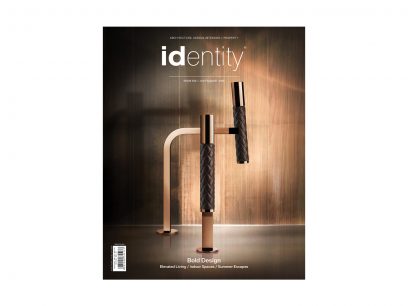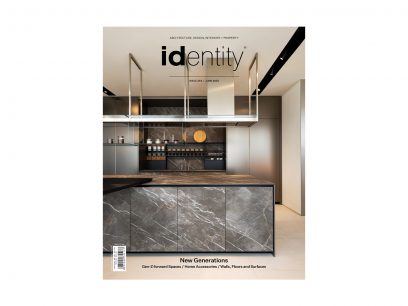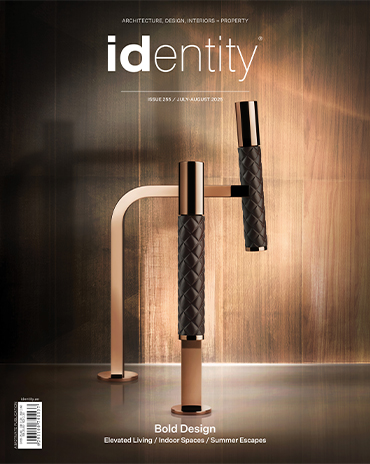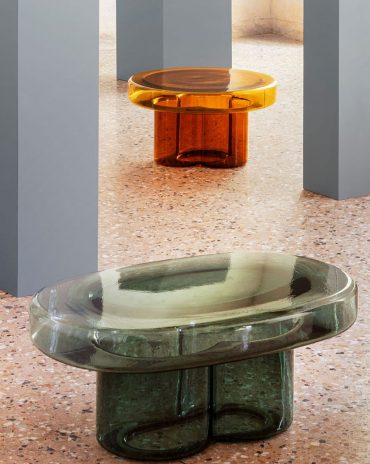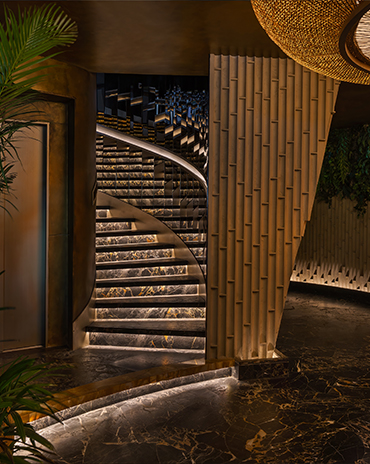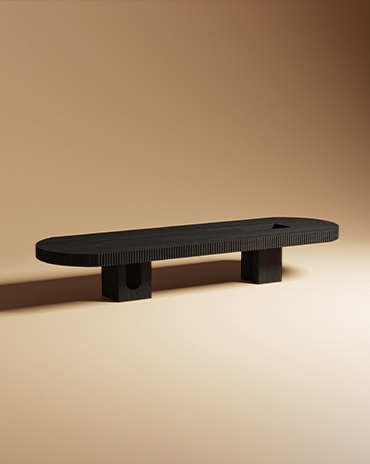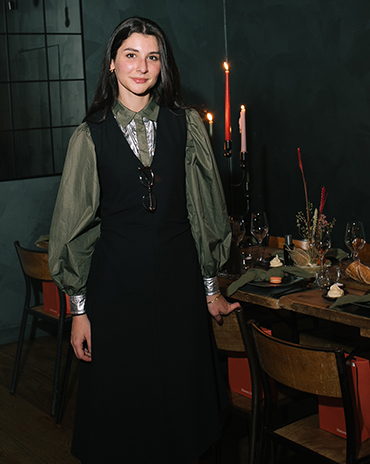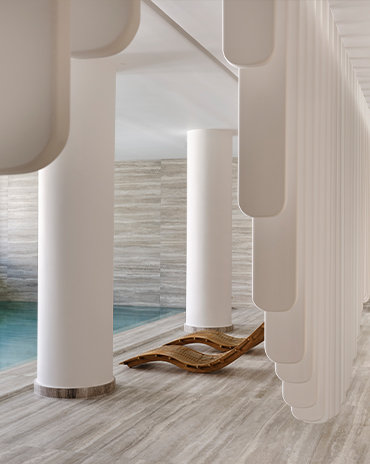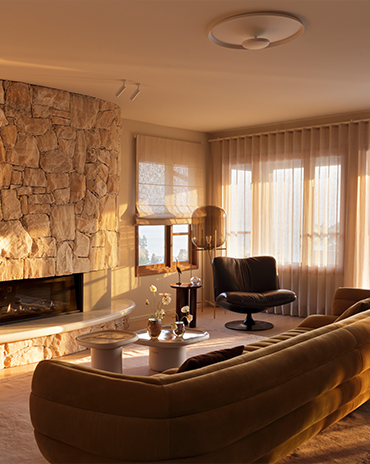Copyright © 2025 Motivate Media Group. All rights reserved.
Enchanted: Puzzeball Theatre
Steven Chilton Architects has created a dramatic proposal for China.

Located in the Huadu District of Guangzhou, China, the Puzzle Ball Theatre proposal by London’s Steven Chilton Architects takes its inspiration from the ancient art of puzzle ball carving. The 2000 seat proposal is designed to house an original and permanent show inspired by the local Yue culture.

Jade Puzzle Ball Guangdong Museum, Guangzhou, China
Chinese puzzle balls are intricately carved sculptural ornaments consisting of several concentric spheres, each freely rotating within the next and traditionally formed from a single block of material. Sculpted by master craftsman, each ball is typically composed of up to 10 concentric layers. Revered for their beauty, mystery and inherent mastery, they are the embodiment of the qualities and characteristics the architecture and show aspire to evoke.
A spherical massing was chosen for the efficiency of its surface area to volume ratio. The primary structure is twin layered dome formed of tubular steel members connected to machined spherical nodes. The cladding panels are formed of GRC and sit as a rainscreen over a substrate formed from insulated aluminium panels with integrated glazing units.
The main entrance is composed of a series of offset spherical surfaces. Each surface has a circular opening that reduce in size concentrically until they reach the glazed portion of the façade. Each spherical surface is offset around its centroid to create an asymmetric overlapping pattern characteristic of puzzle balls.
The surface geometry is inspired by geometric patterns found on wooden window shutters originating from the region. Using generative design techniques, the cladding design was developed with three key goals driving the outcome.
The design started with the mapping of a triangular grid based upon a geodesic polyhedron. The grid was established with input from the engineer to ensure it aligned with the optimal structural solution for the twin layered dome primary steel supporting structure.
Using hierarchical subdivision, a heterogeneous panelization was developed using rhombus and trapezoids as the primary panel shapes. Distributed across the setting out grid over three generations, each one reducing in size from the previous, the density and apparent complexity of the surface increases towards the ground and entrances.
The size of the opening in each panel emerge by the interaction of two main inputs. The first is the need for daylight and views in the theatre lobby and areas adjacent to the main entrances, the second is the desire to keep the façade as closed as possible in the higher parts of the building to avoid heat gain. The outcome pattern is a gentle and gradual variation of solids and void.
The Latest
Highlights of the Biennale Architettura 2025
We shine a light on the pavilions from the Arab world at the Venice Architecture Biennale, on display until Sunday 23 November 2025
Read ‘Bold Design’ – Note from the editor – July/August 2025
Read identity magazine's July/August 2025 edition on ISSUU or grab your copy at the newsstands.
Things to Covet in June 2025
Elevate your spaces with a pop of colour through these unique pieces
Designing Spaces with Purpose and Passion
We interview Andrea Savage from A Life By Design – Living & Branding on creating aesthetically beautiful and deeply functional spaces
Craft and Finesse
EMKAY delivers a bold and intricate fit-out by transforming a 1,800 sqm space into SUSHISAMBA Abu Dhabi, a vibrant multi-level dining experience
An Impressive Entrance
The Synua Wall System by Oikos offers modularity and style
Drifting into Summer
Perennials unveils the Sun Kissed collection for 2025
The Fold
Architect Rabih Geha’s collaboration with Iwan Maktabi
From Floorplans to Foodscapes
For Ayesha Erkin, architecture was never just about buildings, but about how people live, eat, gather and remember
Between Sea and Sky
Cycladic heritage, heartfelt hospitality and contemporary design converge on Deos Mykonos, designed by GM Architects
A Fresh Take on ’70s Style
Curved shapes and colourful artworks bring vibrancy to this contemporary home with mesmerising nature views

